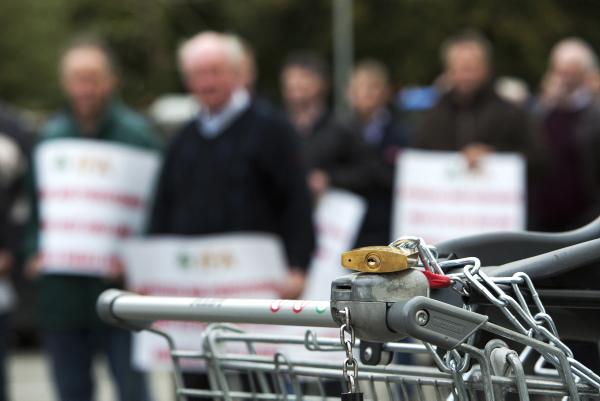Anger over beef prices has reached a new level, with the IFA warning of further action unless processors reflect the strong market returns in prices paid to farmers.
IFA president Eddie Downey has warned that “action will be taken” unless factories address the beef price situation.
“The massive gap that has opened up between Irish cattle prices and those in our main export market in the UK is intolerable,” he said.
The calls come ahead of the third beef roundtable talks, to which Minister for Agriculture Simon Coveney is expected to summon stakeholders next week.
IFA National Livestock chair Henry Burns said: “Farmers are very frustrated with the failure of the Minister to deal with the important beef issues that have seriously damaged the sector and farm incomes since last January.”
Gap reaches 10-year high
The difference between the beef price paid in the Republic of Ireland and the UK has reached a 10-year high. According to Bord Bia figures, the difference between an R4 steer producing a 360kg carcase in Ireland and the UK has reached €369, or €1.03/kg – the highest figure recorded in the past 10 years.
In the case of heifers, the differential in a 330kg R4 carcase stands at €305, or €0.93/kg. The figures reported are the most up-to-date available from Bord Bia for the week ending 4 October 2014. Figure 1 shows that over the past 10 years, the price differential for a 360kg steer and a 330kg heifer fluctuated mainly from €30 to €130, depending on the time of year.
However, the more significant trend has been that since late 2012, the differential has grown considerably. From 2004 to 2011, the average value of a finished R4 steer with a 360kg carcase in the UK was €46 to €102 more than the equivalent in Ireland. In 2012, the average differential on the same steer increased to €145/head. On average over 2013 it further increased to €190/head and so far this year has averaged €241/head. This increased differential has resulted in farmer outrage in recent weeks, with further increases in UK beef prices, while processors in Ireland continue to successfully hold prices due to high throughput.
Figure 1 shows that there is a seasonal aspect to the differential, with the highest gap occurring during autumn and winter, coinciding with cattle coming off grass in the autumn and the expensive winter finishing period.
The differential has been consistently at its lowest during the early summer months when finished cattle supplies in Ireland are traditionally low and beef price is high.
As the differential increases in the winter months, it also clearly outlines the price premium obtained by finishers in the UK, while in an Irish context, premium prices for winter finishing are only obtained by a select few.






 This is a subscriber-only article
This is a subscriber-only article










SHARING OPTIONS: